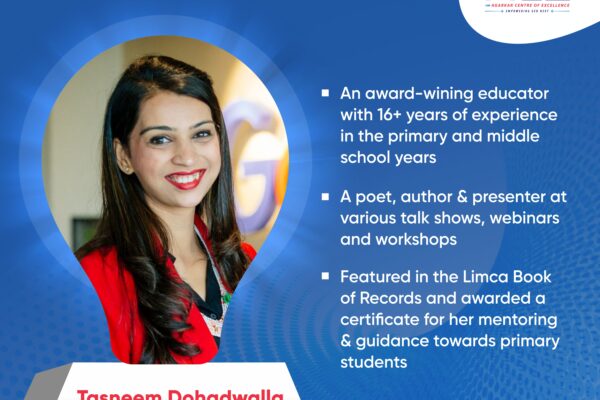There are strong indications that India as a nation is ‘not-too-keen’ on commencing the physical world operations in its public or private sector schools, at least till the end of the year. Speculation was strong during the unlockdown phase 1 and media continues to throw up different reports on what States are thinking, third party auditors who are guiding schools for their SOPs when they do eventually open, and if the ‘mood’ is to be determined by what the Centre believes is ‘safe’ and ‘ideal’ and in the national interests of its citizens especially the youngest who may be the most vulnerable, we may be looking at a longer time in the virtual world.
States continue with their onward march with this consideration of opening schools and when; some are currently simply discussing fee payment challenges that parents have, and the possibility of some schools closing down on account of lack of funds, and trying to work out NEP guidelines for implementation given its time line is next year as well for SOPs.
As the world opens up gradually – France first off to start schools followed by UK, and South East countries as well, the general sense after Israel reported an increase in spikes by asymptomatic children to the senior staff, or the United States of America for that matter, the ground reality is that there are associated risks with schools opening up. For example, one logistic problem for Italy appears to be ordering 3 million single tables and chairs for their schools to maintain social distancing when they do open up. School resumption, assuming parents are willing to send their children (which if we have to go by the survey conducted by different State authorities and Academic Boards, not to mention, independent media houses, parents are clearly in favour of not!) is a complex set of protocols that needs careful consideration and a step-by-step execution with every stake-holder oriented and on board, and that means there needs to be a passage of time after an announcement by the Centre and their respective States, for the schools to get into ‘operation-getback’. Sanitation, re-arrangement of furniture, quarantine of staff if returning from different states, not to mention infirmary upgrades and tracking devices, staff and children training and flexible schedules of learning which may need plenty of adjustment and re-thinks. Also the SOPs when a child tests positive or a staff member, what happens then?
This is all assuming that parents ‘trust’ their educational partner (and when I look at what is happening with some parent petitions against some schools over fee payments, I dare, the appears to be a general lack of support for establishments) and want to send their children to school in the absence of a vaccine which as many countries are in their trial phase it expected early next year only.
The alternative, as educators have been advocating since the first lockdown in March has been a year of virtual engagements, and when ‘safe’ a possibility of opening in Jan 2021. That does not mean that the academic year can be treated as a year written off simply because every age group has different needs, need specific attention and well meaning parents with WFH schedules are struggling to cope with learning outcomes that trained teachers can deliver on seamlessly. This is now an established fact, with parents in support of virtual engagements.
Assuming India slips into its second wave, which as scientists and the medical fraternity warn us might be more dangerous than the first for we let the guard down easily ( history is witness to this), we may well use all our time and effort and concentrate ‘humanising’ the digital learning with socio emotional learning so children can ‘normalise’, research creative ways to engage children with break-away sessions, synchronous and asynchronous work so that it is not a burn out for teachers or students, ‘re-organise’ curriculum targets so that essentials are covered that are non negotiable, and work on more deeper learning than an introduction of many new concepts. We might as well look at the next 4 months as a period of accelerating the systems and processes and collaborating with other schools to create a ‘fresh, energised’ format of learning.
It is critical to embrace the reality, sooner than later and find ways to build capabilities and capacity instead of worrying whether online or physical world. Let’s face it, we do not as a community have many answers only facts of what is reported as schools world-over have started opening up and their experiences matter when we take our first step. Mind you, except the US most other countries are not reporting the one day highs or spikes like India is at the moment and we have not even fully opened up as a nation!
Let’s for a moment accept that online is no substitute for the physical world, but it sure is an able partner when we speak of continuous learning, one that will not put a child ‘back’ given there has been a loss of ‘learning’ for a prolonged period of time and research does suggest that this has far reaching impacts.
Learning for most schools is about projects, activities, it is about thinking laterally, working on core skills including life skills but it offers that ‘consistency’ to a ‘normal’ routine at home for children who are otherwise left ‘unattended’. There will either be a case of a household doing too much or too little, both ends extreme in my opinion and not in the interest of the child.
Therefore, experts need to dig deep, find innovative ideas of how to manage the virtual space for those with IT capabilities, and focus on bringing these capabilities to those that do not.
It is critical that we move fast when we see the writing on the wall, and optimise. The communication between now and when schools open will be crucial and critical, and cannot be ignored. A decision about sending a child back to school involves state directives in terms of permissions but it will entirely depend on each school’s capacity and capability not to mention the willingness of the parents. Joint effort. Wasn’t it supposed to always be that?
Let’s focus on humanising the digital space as never before so at least one section of our community, our children emerge ‘protected’ from the devastating effects of this pandemic.












